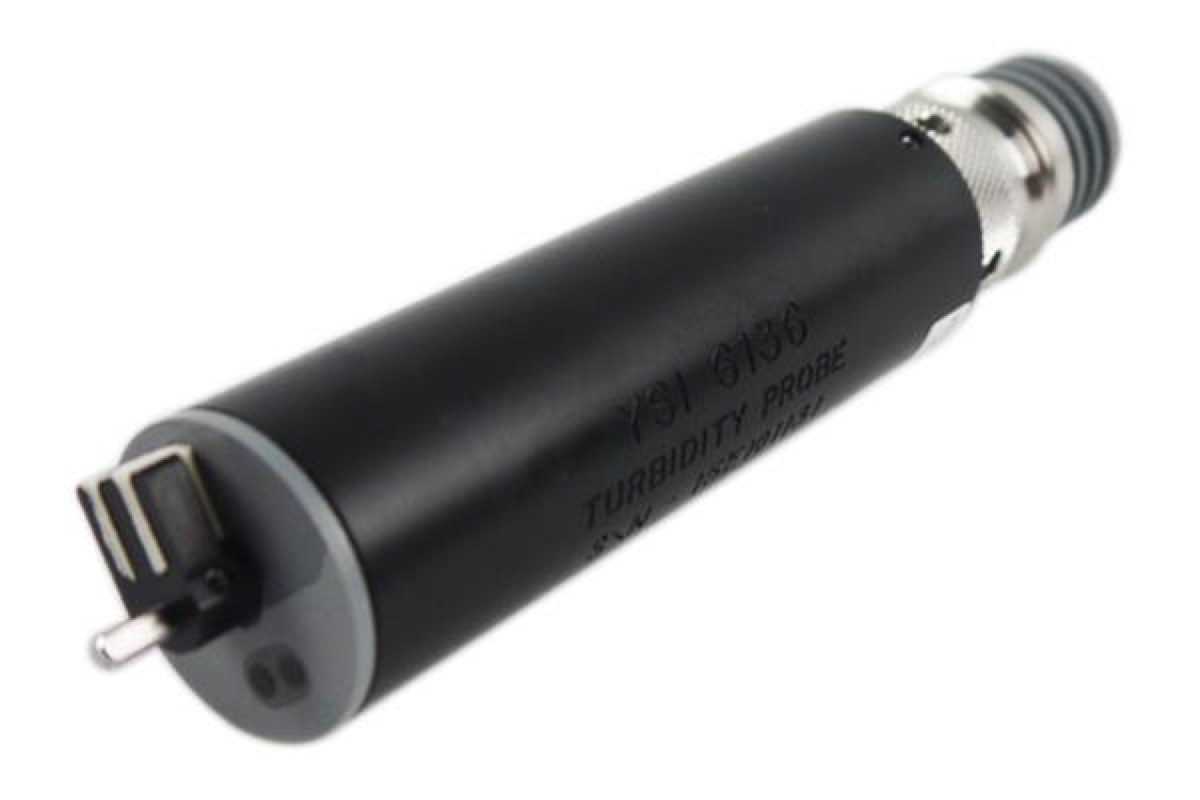
Description: Turbidity is the presence of suspended and dissolved matter, such as clay, silt, finely divided organic matter, plankton, other microscopic organisms, organic acids, and dyes, known as total suspended solids (TSS). Increase in TSS impacts the visibility or cloudiness of the water.
Turbidity sensors are placed in the body of water, periodically directing light into the water, measuring the light that scatters or is absorbed by the suspended particles. Data is most commonly reported in nephelometric turbidity units (NTU) with a range of 0 to 1,500 NTU and an accuracy around 5%.
Routine maintenance and cleaning of Turbidity sensors is important to avoid fouling. Fouling of the sensor results in accuracy issues. To help with short term cleaning of the sensor tip, Turbidity sensors often come with self-cleaning wipers
Costs USD Lower: $6,000
Costs USD Upper: $25,000
Accessories: ACCESSORIES
Advantages: Provides real-time insitu measurements
Disadvantages: Frequent maintenance is required, and likely every couple of weeks in turbid water.
Pictures:
